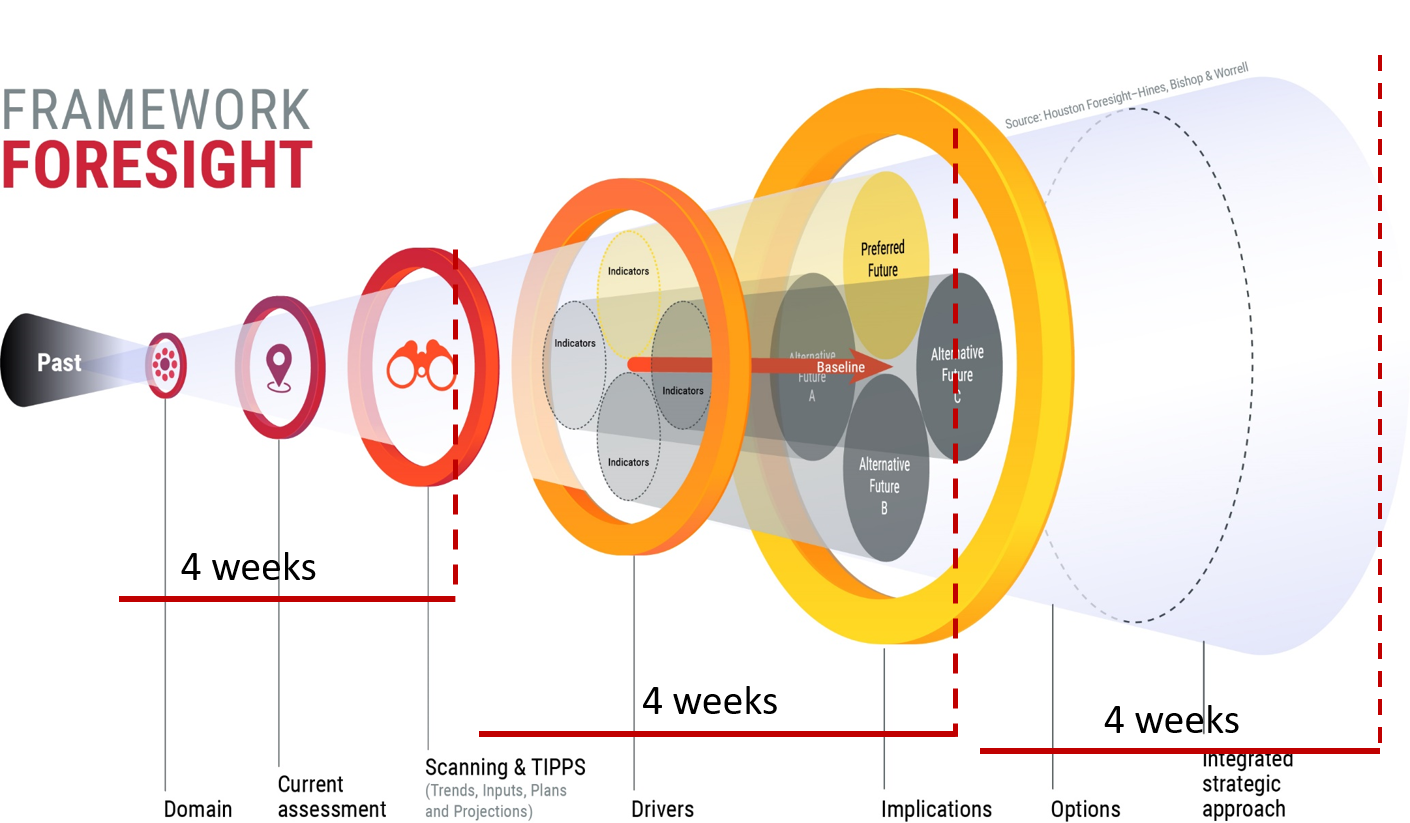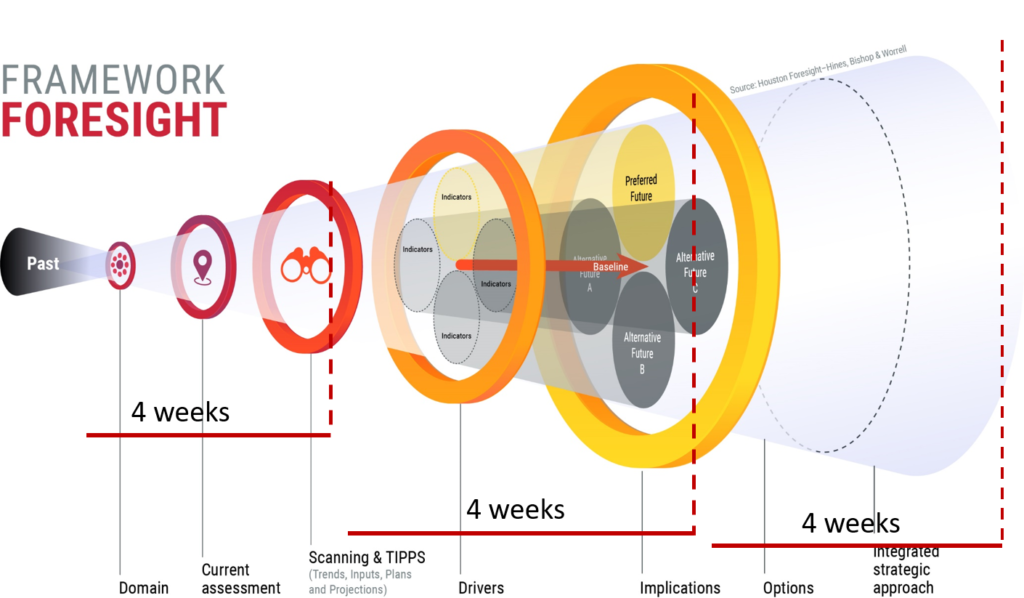In our teaching as well as in our project work, we talk about the “typical” 3-month project. We joke that there is no such thing as typical and it is relatively rare that a project takes exactly three months. But it is pretty close to average and it helps frame the conversation about project timing.
The graphic shows how we divide projects into three major parts of work over time.
The first part of about 4 weeks is focused on research. We start by framing the project and creating the visual domain map that helps guide the project. We then simultaneously launch our scanning and current assessment. The scanning will go on for the entire research part. The current assessment gets us up to speed on the recent history, key stakeholders, and hot topics. This may take a couple of weeks and then it’s on the the TIPPS inputs (trends issues plans and projections).
That brings us to the 2nd part of 4 weeks: developing the scenarios. The first step is to synthesize the scanning, current assessment, and TIPPS into a set of drivers. The drivers are then used as the key building blocks of the scenarios. There is typically a scenario generation workshops in this part, which is followed by a write-up phase and we’ll often add in some extras to bring the scenarios to life.
The third and final part of about 4 weeks is about interpreting the scenarios/futures together with the client. We like to do a workshop in here if we can. We start with implications, identify issues and/or opportunities, and develop strategic options for addressing them, and tie it all together with an integrated strategic approach across the scenario landscape. Specific recommendations, typically in sequenced phases, round out the project. – Andy Hines


Really amazing visual synthesis to think a organizational foresight project and its scope.